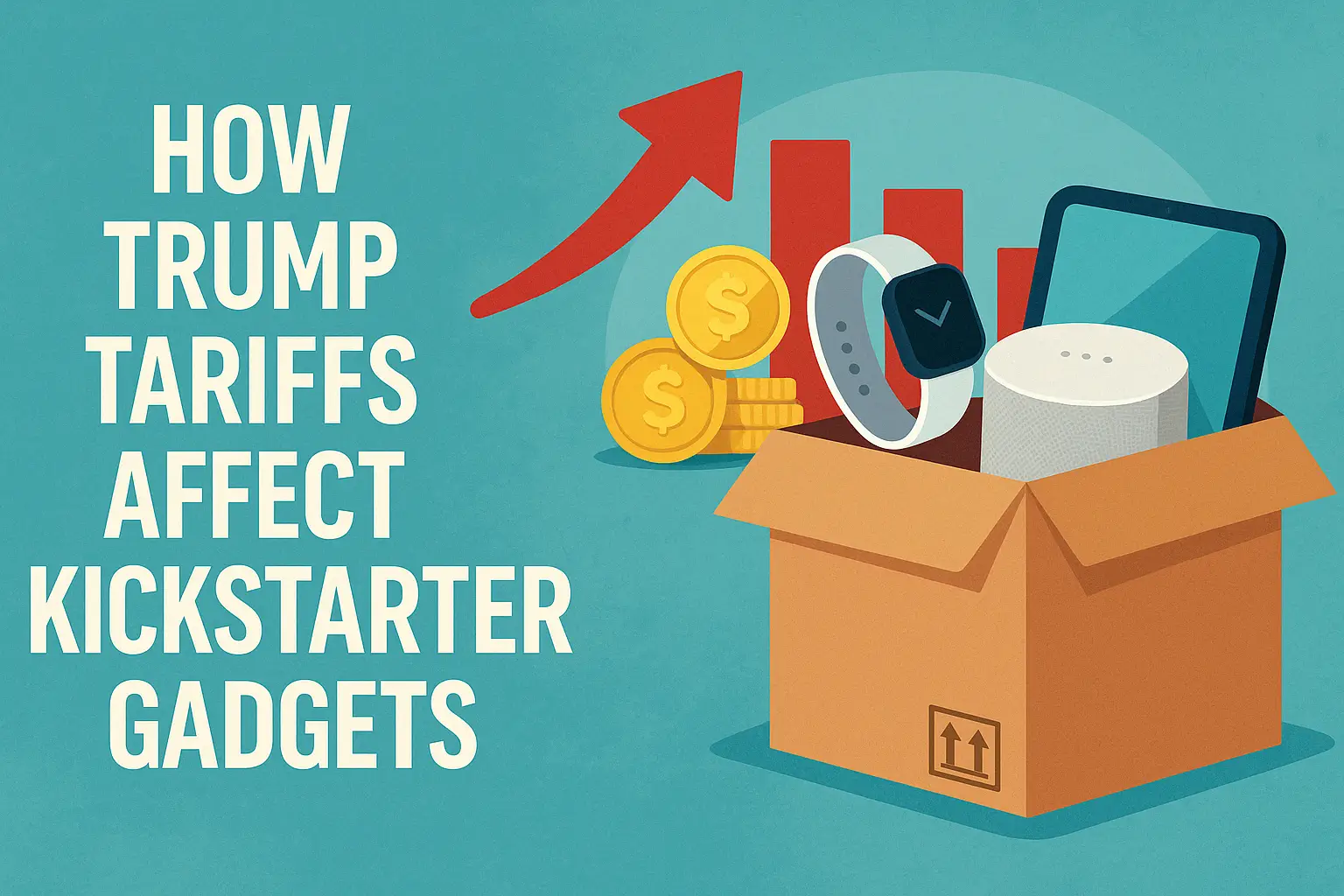How Trump Tariffs Affect Kickstarter Gadgets
A Shockwave Through Crowdfunding
In 2025, the Trump administration implemented sweeping new tariffs targeting Chinese imports. These measures, which affect a wide range of goods including electronics and raw materials, have rippled through many sectors. But one sector particularly hard-hit is the crowdfunding world—specifically Kickstarter campaigns centered around gadgets.
Kickstarter is home to thousands of creators building smart devices, wearables, tools, and tech accessories. Most of these products are designed in the West but manufactured in China due to cost-efficiency, speed, and access to a massive supplier network. Tariffs have upended this formula, forcing creators to rethink how—and where—they make their products.
“how Trump tariffs affect Kickstarter” explores in detail how Trump’s tariffs are affecting Kickstarter gadget creators. We’ll look at the impact on budgets, manufacturing, backer trust, campaign planning, and potential paths forward.
Tariffs and the Cost Crisis
Let’s start with the most immediate issue: cost. The new tariffs impose import taxes ranging from 25% to over 100% on many goods manufactured in China. That includes electronics components, batteries, sensors, plastic shells, and more—the very materials that most Kickstarter gadgets are made from.
For example, imagine you’re launching a $90 wireless charger. If the cost to produce and ship it from China was $30 before, a 25% tariff could push it to $37.50 or more. For campaigns operating on razor-thin margins, this is devastating.
You either have to eat the cost, increase prices post-campaign, or cut features. None of those options are ideal. And most backers don’t respond well to price hikes after the campaign ends.
As a result, many campaigns are struggling to stay profitable or even to fulfill rewards at all.
Budget Planning Becomes a Gamble
Tariffs don’t just increase costs—they create uncertainty. Most creators plan their campaigns months in advance. Pricing structures, reward tiers, stretch goals, and advertising budgets are all calculated carefully before launch.
But tariffs can shift mid-campaign. If you build your financial model assuming a 0% import tax and that jumps to 25% while your campaign is live—or worse, between your production and fulfillment stage—you’re in trouble.
Several campaigns in 2024 and early 2025 have reported unexpected shortfalls due to these exact issues. Some had to delay fulfillment. Others had to issue unpleasant updates asking backers for additional contributions. A few even canceled manufacturing altogether.
This unpredictability is making crowdfunding riskier. It’s especially hard on first-time creators who don’t have the financial cushion to absorb surprise costs.
The Great Manufacturing Migration
The tariffs are pushing creators to look beyond China. Alternative manufacturing hubs like Vietnam, India, Malaysia, Bulgaria, and Mexico are seeing a surge in interest.
Vietnam, for instance, has grown rapidly as a production base for electronics. Mexico offers the benefit of being part of USMCA (formerly NAFTA), meaning tariff-free exports to the U.S. Bulgaria, as an EU member, provides a compelling option for creators focused on the European market.
But shifting manufacturing isn’t easy. China still dominates in terms of supply chain efficiency, component availability, prototyping speed, and manufacturing know-how.
Working with a new country means:
- Longer lead times
- Smaller factory networks
- Language or cultural barriers
- Higher costs for custom tooling
You may need to manage hybrid models—prototyping in China, assembling in Mexico, and fulfilling from Europe.
The Backer Experience Suffers
Kickstarter is built on trust. When creators delay fulfillment, raise shipping prices post-campaign, or cancel features to cut costs, backers feel disappointed—or worse, scammed.
This is especially true when updates don’t clearly explain why changes are happening. Tariffs are complicated, and not every backer understands why a product now costs $10 more or is delayed by 3 months.
Repeated issues like these are creating fatigue. Some backers are avoiding gadget campaigns altogether, especially U.S.-based ones that are more exposed to tariff complications.
Campaigns that once promised a sleek, affordable smart device now come with disclaimers, delivery risks, and potential extra fees.
Smart Strategies for Creators
Despite the challenges, you can adapt to this changing landscape. Here are a few practical steps:
- Add a pricing buffer: Build in a margin of safety to handle unexpected tariff hikes.
- Be transparent: Keep backers informed about possible changes to delivery times or prices.
- Explore new production hubs: Look at countries like Mexico or Bulgaria that avoid U.S. tariffs.
- Segment fulfillment: Consider separate shipping strategies for the U.S., EU, and APAC.
- Test smaller batches: Use low-volume trial runs to test new suppliers before committing big budgets.
These approaches can help you stay flexible—and protect your campaign from the worst disruptions.
Adapting Your Launch Strategy
Your entire launch strategy may need to shift. If your primary market is the U.S., expect delays and higher costs. But if you’re able to target Europe or Asia instead, your logistics might be smoother.
It’s also worth building your email list earlier than planned and segmenting your audience by region. This lets you tailor pricing, shipping, and timelines to each market.
Creators are also adjusting their campaign messaging. Some are emphasizing local or tariff-free production. Others are offering exclusive rewards for non-U.S. backers to reduce risk.
A more regionally tailored strategy can increase your chances of success in a turbulent environment.
Crowdfunding in a Tariff World
Trump’s new tariffs are reshaping how Kickstarter gadget campaigns are planned, priced, and produced. For creators, this is a serious challenge—but also an opportunity.
If you plan early, build in flexibility, and communicate clearly with your backers, you can still run a successful campaign. The key is adapting fast—and not waiting for things to return to “normal.”
In this new reality, the most resilient creators will be the ones who think globally, plan regionally, and stay connected to their backers every step of the way.


